FOCUS
Interview with four post-doctoral scholars recruited by the Institut d'étude de la cognition (IEC)
The LabEx Institute for the Study of Cognition (IEC) supports research at DEC and encourages collaborations amongst its teams. In 2015, four post-doctoral scholars were recruited by the IEC for a period of two years to work on innovative interdisciplinary projects. Each one of them is working with researchers from two different teams in the Department. Pierre Jacquet, Rupesh Kumach, Stephen Whitmarsh and Tal Linzen detail their professional histories and the projects they are currently working on.
Could you tell us a little about yourself?
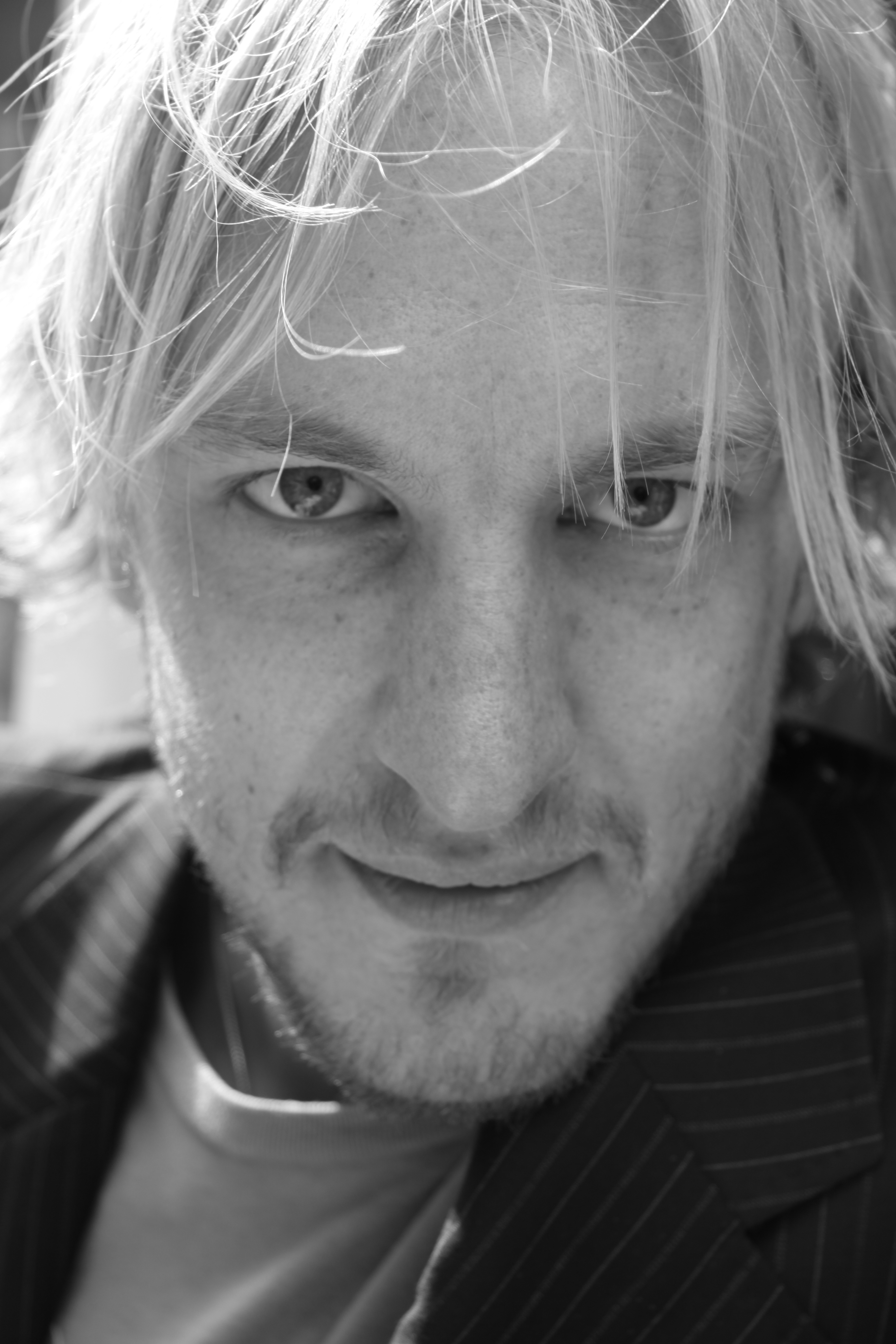 SW: I was born in the Netherlands, not far from Amsterdam (in the sense that in the Netherlands no place really is)
where I studied cognitive psychology. I then moved to Nijmegen, where Henk Barendregt decided to spend his life-time award not on his professional
field of lambda calculus, but on investigating his other passion, meditation. With co-supervision of Ole Jensen I did my PhD with him at the Donders
Center for Cognitive Neuroimaging. The title of my manuscript became Metacognition and Non-reactivity in Mindfulness, where I tried to make this complex
and very culturally defined topic more open to neuroscience investigation. For example, one of the cognitive processes during meditation is an awareness
of the content of one’s mind, while trying to maintain attention on the body. To test whether this is possible, I let subjects meditate while recording
their brain activity using magnetoencephalography (MEG). I then used alpha activity (~10Hz) as a proxy of attention to test whether subjects were able
to accurately report on their (in)attention, or whether all this talk of self-awareness was all in their imagination. (Yes, they could).
Before moving to Paris last December, I lived in Stockholm where I helped start up the National Swedish MEG facility (NatMEG).
SW: I was born in the Netherlands, not far from Amsterdam (in the sense that in the Netherlands no place really is)
where I studied cognitive psychology. I then moved to Nijmegen, where Henk Barendregt decided to spend his life-time award not on his professional
field of lambda calculus, but on investigating his other passion, meditation. With co-supervision of Ole Jensen I did my PhD with him at the Donders
Center for Cognitive Neuroimaging. The title of my manuscript became Metacognition and Non-reactivity in Mindfulness, where I tried to make this complex
and very culturally defined topic more open to neuroscience investigation. For example, one of the cognitive processes during meditation is an awareness
of the content of one’s mind, while trying to maintain attention on the body. To test whether this is possible, I let subjects meditate while recording
their brain activity using magnetoencephalography (MEG). I then used alpha activity (~10Hz) as a proxy of attention to test whether subjects were able
to accurately report on their (in)attention, or whether all this talk of self-awareness was all in their imagination. (Yes, they could).
Before moving to Paris last December, I lived in Stockholm where I helped start up the National Swedish MEG facility (NatMEG).
 TL: I received my PhD from the Department of Linguistics at New York University in September 2015.
My work at NYU focused on probabilistic language comprehension. Suppose you've read the first few words of a sentence. There are
typically many different ways that the rest of the sentence can unfold. Psycholinguists have reasons to believe that we predict
many of those continuations in advance of actually reading them; we also assign a probability to each one of those possible
continuations, reflecting how likely we think that continuation is. I used a combination of methods -- neural recordings,
reading time experiment and computational models -- to investigate what it is exactly that we predict when we understand
a word or a sentence, and how comprehension difficulty is affected by the probabilities that we assign to each of the possible continuations.
TL: I received my PhD from the Department of Linguistics at New York University in September 2015.
My work at NYU focused on probabilistic language comprehension. Suppose you've read the first few words of a sentence. There are
typically many different ways that the rest of the sentence can unfold. Psycholinguists have reasons to believe that we predict
many of those continuations in advance of actually reading them; we also assign a probability to each one of those possible
continuations, reflecting how likely we think that continuation is. I used a combination of methods -- neural recordings,
reading time experiment and computational models -- to investigate what it is exactly that we predict when we understand
a word or a sentence, and how comprehension difficulty is affected by the probabilities that we assign to each of the possible continuations.
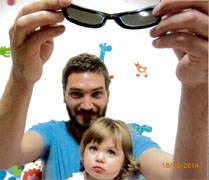 PJ: I was born in Annecy (Haute-Savoie – France) in 1980 and spent my childhood in
a small village of the French Alps. No science there but amazing nature and rural culture. I obtained a Literary
high school diploma in 1998 and then studied Philosophy for three years at the University Pierre Mendès-France
in Grenoble, with a particular interest in the history of scientific ideas and the history of evolutionary biology.
After this, I spent six months at the Université du Québec à Montreal at the end of the year 2001 as a visiting student.
This is where I discovered more deeply cognitive sciences thanks to the striking classes of professors Luc Faucher and
Pierre Poirier. This discovery led me to give up philosophy in 2002 and to study cognitive psychology and neuropsychology at
the University Lumière in Lyon. Between 2006 and 2007, I completed my training with a master in clinical neuropsychology
at the University Louis Pasteur in Strasbourg and a master in cognitive neuropsychology at the University Lumière in Lyon.
I then spent one year to work as a clinical neuropsychologist and research assistant at the Hôpital Le Vinatier in Lyon
in an adult psychiatry unit, supervising cognitive remediation research programs with patients suffering from schizophrenia.
At the beginning of 2008, I got a three-year position at the Department of Psychology of the University of Bologna (Italy) to work as
a research assistant in the European Project ROSSI (Emergence of Communication in RObots through Sensorimotor and Social Interaction).
In parallel, I joined the international PhD program in cognitive neuroscience of the Bologna University and obtained my PhD degree in 2012.
The aim of this PhD project achieved under the supervision of Pr. Anna M. Borghi was to investigate, using a variety of techniques
such like classical psychophysics, transcranial magnetic stimulation and individual-based evolutionary modelling, the contribution
of sensori-motor constraints and prior information to action understanding and social learning in human observers. I then obtained
a post-doc grant from the Fyssen Foundation, which allowed me to integrate Dr. Florian Waszak’s team at the Laboratoire de
Psychologie de la Perception (LPP) at the Paris-Descartes University as a post-doc researcher. In the meanwhile I also found
the time of having two daughters. In the LPP I was trained in electro-encephalography and used this method to study a particular
class of social learning strategy: social conformity. I also brought my expertise in TMS to work on another project with Dr. Thérèse Collins.
PJ: I was born in Annecy (Haute-Savoie – France) in 1980 and spent my childhood in
a small village of the French Alps. No science there but amazing nature and rural culture. I obtained a Literary
high school diploma in 1998 and then studied Philosophy for three years at the University Pierre Mendès-France
in Grenoble, with a particular interest in the history of scientific ideas and the history of evolutionary biology.
After this, I spent six months at the Université du Québec à Montreal at the end of the year 2001 as a visiting student.
This is where I discovered more deeply cognitive sciences thanks to the striking classes of professors Luc Faucher and
Pierre Poirier. This discovery led me to give up philosophy in 2002 and to study cognitive psychology and neuropsychology at
the University Lumière in Lyon. Between 2006 and 2007, I completed my training with a master in clinical neuropsychology
at the University Louis Pasteur in Strasbourg and a master in cognitive neuropsychology at the University Lumière in Lyon.
I then spent one year to work as a clinical neuropsychologist and research assistant at the Hôpital Le Vinatier in Lyon
in an adult psychiatry unit, supervising cognitive remediation research programs with patients suffering from schizophrenia.
At the beginning of 2008, I got a three-year position at the Department of Psychology of the University of Bologna (Italy) to work as
a research assistant in the European Project ROSSI (Emergence of Communication in RObots through Sensorimotor and Social Interaction).
In parallel, I joined the international PhD program in cognitive neuroscience of the Bologna University and obtained my PhD degree in 2012.
The aim of this PhD project achieved under the supervision of Pr. Anna M. Borghi was to investigate, using a variety of techniques
such like classical psychophysics, transcranial magnetic stimulation and individual-based evolutionary modelling, the contribution
of sensori-motor constraints and prior information to action understanding and social learning in human observers. I then obtained
a post-doc grant from the Fyssen Foundation, which allowed me to integrate Dr. Florian Waszak’s team at the Laboratoire de
Psychologie de la Perception (LPP) at the Paris-Descartes University as a post-doc researcher. In the meanwhile I also found
the time of having two daughters. In the LPP I was trained in electro-encephalography and used this method to study a particular
class of social learning strategy: social conformity. I also brought my expertise in TMS to work on another project with Dr. Thérèse Collins.
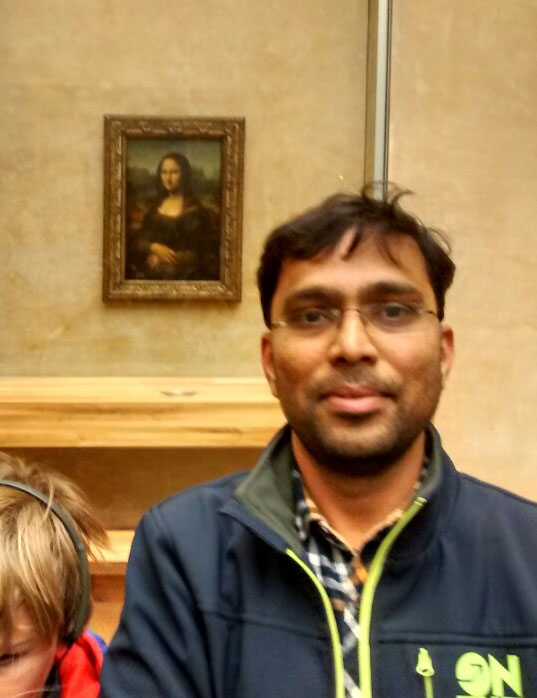 RK: I come from Adoni, a small town in southern part of India. After finishing my Bachelor degree here,
I cleared a national test to enter Jawaharlal Nehru University (JNU), New Delhi, for pursuing a masters in physics. During my masters,
I was fascinated by the techniques of nonlinear dynamics and its uses in understanding biological problems. This lay the foundation for my
interdisciplinary interests. I wanted to pursue interdisciplinary research after my masters, and joined the sleep research
laboratory of Prof. B. N. Mallick in the School of Life Sciences, JNU, as a junior research fellow.
The group was working on neuronal mechanism and functions of sleep wakefulness, particularly the regulation of rapid eye moment sleep.
Here I was exposed to various techniques of neurophysiology of sleep wakefulness. In his lab, I was given a challenge of starting a
section in interdisciplinary research involving neuroscience and physics. With the help of Prof. Ram Ramaswamy in the School of Physical
Sciences, JNU, we developed novel techniques for understanding inherent dynamics of EEG during cognitive behavior. This method is
based on empirical mode decomposition and was helpful in categorizing the dynamics in EEG during different sleep wake states.
EEG during wakefulness and REM sleep look similar and our method was able to capture the local dynamics that is different in these two states.
I entered the School of Computational and Integrative Sciences (SCIS) of JNU for my doctoral research. I picked Prof. Ramaswamy's lab particularly as
it was related to my previous research and I was interested in applications of non-linear dynamics. I finished my one-year course work and in
parallel I conducted my electrophysiological experiments in the sleep laboratory. My PhD topic was “Collective Dynamics and Emergent Properties
of Neuronal System”. It was an interdisciplinary project involving neurophysiology and modeling. In this work I studied sleep-wake patters in rodents,
its neuronal regulation, factors influencing sleep-wake bouts and its associated pathology. During this time Prof. Amitabha bose, NJIT, USA was on
sabbatical at JNU and he helped me in developing a mathematical model for understanding sleep-wake patterns. This model shed light on how sleep-wake behavior emerges through the synaptic interaction of associated brain regions, the triggering of rapid eye movement sleep and its associated patho-physiology.
Specifically, it explains the causality of simultaneous activation and deactivation of REM-ON and REM-OFF neurons during REM sleep regulation besides many
other mechanisms.
This led to the important as to how neurons exhibit coherent activation that has implications in the regulation of given behavior.
Hence, as a final project, I studied coherent behavior of coupled neurons. Since neurons in the brain are compactly packed and
they usually share their incoming input, we investigated how neurons synchronize their firing under similar inputs. Using simulations,
we predicted that different synaptic configurations (electrical or chemical) have different synchronizing properties.
RK: I come from Adoni, a small town in southern part of India. After finishing my Bachelor degree here,
I cleared a national test to enter Jawaharlal Nehru University (JNU), New Delhi, for pursuing a masters in physics. During my masters,
I was fascinated by the techniques of nonlinear dynamics and its uses in understanding biological problems. This lay the foundation for my
interdisciplinary interests. I wanted to pursue interdisciplinary research after my masters, and joined the sleep research
laboratory of Prof. B. N. Mallick in the School of Life Sciences, JNU, as a junior research fellow.
The group was working on neuronal mechanism and functions of sleep wakefulness, particularly the regulation of rapid eye moment sleep.
Here I was exposed to various techniques of neurophysiology of sleep wakefulness. In his lab, I was given a challenge of starting a
section in interdisciplinary research involving neuroscience and physics. With the help of Prof. Ram Ramaswamy in the School of Physical
Sciences, JNU, we developed novel techniques for understanding inherent dynamics of EEG during cognitive behavior. This method is
based on empirical mode decomposition and was helpful in categorizing the dynamics in EEG during different sleep wake states.
EEG during wakefulness and REM sleep look similar and our method was able to capture the local dynamics that is different in these two states.
I entered the School of Computational and Integrative Sciences (SCIS) of JNU for my doctoral research. I picked Prof. Ramaswamy's lab particularly as
it was related to my previous research and I was interested in applications of non-linear dynamics. I finished my one-year course work and in
parallel I conducted my electrophysiological experiments in the sleep laboratory. My PhD topic was “Collective Dynamics and Emergent Properties
of Neuronal System”. It was an interdisciplinary project involving neurophysiology and modeling. In this work I studied sleep-wake patters in rodents,
its neuronal regulation, factors influencing sleep-wake bouts and its associated pathology. During this time Prof. Amitabha bose, NJIT, USA was on
sabbatical at JNU and he helped me in developing a mathematical model for understanding sleep-wake patterns. This model shed light on how sleep-wake behavior emerges through the synaptic interaction of associated brain regions, the triggering of rapid eye movement sleep and its associated patho-physiology.
Specifically, it explains the causality of simultaneous activation and deactivation of REM-ON and REM-OFF neurons during REM sleep regulation besides many
other mechanisms.
This led to the important as to how neurons exhibit coherent activation that has implications in the regulation of given behavior.
Hence, as a final project, I studied coherent behavior of coupled neurons. Since neurons in the brain are compactly packed and
they usually share their incoming input, we investigated how neurons synchronize their firing under similar inputs. Using simulations,
we predicted that different synaptic configurations (electrical or chemical) have different synchronizing properties.
Could you please each describe the project that you're working on at the IEC?
SW: In general, in my project we will be investigating ways in which intrinsic activity from the body is cognitively relevant to us.
In other words, we will be measuring how the internal electrophysiological milieu of the body influences ongoing brain activity.
The neuronal activity one can measure from inside the body, such as from the heart and stomach, is actually quite slow and rhythmic
compared to the frantic activity of the brain. We will therefore look for coupling between this periodic activity from the body and
slow changes in cognitive activity, such as drifts in attentional focus. In this way we might better understand how the brain can be both
autonomous and integrated in a larger electrophysiological milieu.
TL: How do we learn the meaning of words? An intuitive idea is that children notice that a label ("dog")
tends to be used when there's an object of a particular type in our visual field (a dog, in this case). While this picture is certainly
too simple, there's some truth to it, at least with respect to concrete words like "dog". But it clearly fails when it comes to difficult,
abstract words like "believe", "every" and "could", which do not refer to objects in the world; the only way to learn their meaning is from
the linguistic contexts in which they're used.
In our project, we're investigating a family of simple systems from computational linguistics that do exactly that:
guess the meaning of a word from the contexts in which it is used. We're coming up with tests to evaluate whether those systems understand those
words in the way linguists believe they should understand them, with the eventual goal of understanding whether those systems are sufficient as
models of human knowledge of the meaning of those words, or whether we need more sophisticated systems (and if so, how we can get closer to having such systems).
PJ: My project is built on the simple idea that variations in social behaviour that can be observed
between individuals, social classes or societies, can be viewed within an evolutionary lense, as a set of adaptive
responses individuals produce to face a range of ecological pressures (e.g., morbidity/mortality rate). Following this,
the general aims of this research program is to test whether within- and between-individual variability in social-learning
motivation – the need to acquire new behaviours from copying others – can be accounted for by variations in environmental
harshness. More specifically, one can identify two main objectives: 1) understanding when individuals favour social learning
over individual exploration and to identify the most important ecological stressors driving such a trade-off; 2) assessing
how the ecological stressors impact the anatomo-functional properties of the brain.
RK: My project is to understand the neuronal mechanism underlying
temporal stimuli discrimination in the auditory cortex, in particular, how click trains are processed by auditory cortical
neurons. It involves both experiments and modeling. Earlier research on the topic shows that the neuronal coding in the auditory
cortex was strongly depended on the behavioral state of the animal. For example, in auditory discrimination tasks, in which
the animal differentiates between click-trains of different frequencies, have revealed two types of coding. On the one hand,
when the animal listens to sounds passively, coding depends on the physical properties of the stimulus. On the other hand, active listening results
in coding of the behavioral meaning of the sounds. One of the aims of the project
is to find the mechanisms underlying these two computational modes. We plan to pursue this using a generic network of
excitatory-inhibitory neurons in which the network can discriminate incoming temporal stimuli, by transforming them into
higher dimensional spatial patterns. Moreover, we would like to study other alternative mechanisms such as comparing spectrograms
of the two stimuli. Once the model shows robust input-output properties, one can it for experimentally testing diverse types of
stimuli in animals.
Each of you work with two co-PIs in different research teams/units of the IEC. Could you introduce your PI's ? How is the collaboration organized ?
SW: Jérôme Sackur is associate professor at the Laboratoire de Sciences Cognitives et Psycholinguistique,
a cognitive psychologist and philosopher with an interest in consciousness, visual cognition, and the history and epistemology of psychology.
Catherine Tallon-Baudry is a CNRS senior researcher at the Laboratoire de Neurosciences Cognitives, an expert in visual cognition now leading
a group that is making exciting new discoveries in electrophysiological brain-body interactions. I can say that our collaboration feels natural,
even obvious, since we have clear shared research interests and that within this context I have the freedom to explore my own.
TL: I work with Benjamin Spector, who's a linguist at Institut Jean Nicod, and Emmanuel Dupoux, who heads up the modeling team at the LSCP (Cognitive Science and Psycholinguistics Lab). Our collaboration involves weekly one-on-one meetings between me and each one of the PIs, as well as occasional meetings of the three of us.
Benjamin has mostly worked in theoretical formal semantics, a field that aims to formalize the meaning of tricky natural language words like "know" and "might" using tools from mathematical logic. He's also tested the cognitive consequences of some of those formal proposals, in collaboration with experimental psycholinguists.
Emmanuel develops computational models of language acquisition: his team aims to create computer programs that learn language in the same way that humans do. Most of his work so far has focused on the acquisition of the speech sounds, but recently he's become interested in word meaning as well, which is where my project comes in.
PJ: Coralie Chevallier is an experimental psychologist at the Laboratoire de Neurosciences Cognitives at INSERM, in Julie Grèzes' Team.
She is also co-PI of the Evolution and Social Cognition Group. In her research she applies evolutionary thinking to understand variations in human
social cognition. She is more specifically interested in cognitive, behavioral, and psychopathological aspects of social cognition, including several
of its main building blocks: social motivation and reward, theory of mind, communication and pragmatics, reputation and cooperation.
Valérian Chambon is a cognitive neuroscientist working on action and decision-making. He holds
a CNRS junior position at the Institut Jean Nicod (ENS). His research interests are action control (cognitive and motor control), action prediction
(mentalizing, simulation, causal inference), action experience (agency, sense of causation, regret), computational modelling, psychopathology, and neuroimaging
(fMRI and TMS). The first year will be dedicated to examining the trade-off between the social and individual learning modes.
This part of the project will mainly involve Coralie Chevallier. The second year will focus on the related anatomo-functional properties of the brain, and will mainly involve Valerian Chambon.
RK: I work under the supervision of Prof. Shiab Shamma at the LSP and Dr. Srdjan Ostojic at the GNT. Shihab has a wide span
of research interests in the auditory
system ranging from neurophysiological processing in the auditory cortex to human perception of sounds.
He has worked extensively on understanding the neuronal mechanisms of auditory processing, in particluar in ferrets.
He holds a keen interest in research and encourages independent thinking.
A walk with him on the Paris streets is very motivating. He also holds a joint appointment at the University of Maryland. Srdjan works on theoretical neuroscience.
His research interest is also broad with topics ranging from decision making to synaptic plasticity and network dynamics. His focused way of working motivates me a great deal. I have regular meetings
with Shihab to discuss the possible outcomes of the project and Srdjan has helped me settling down in Paris after my arrival at ENS. I also discuss the previous data recorded
in Shihab's lab with post-docs Yves Boubenec and Sundeep Teki to get insights into the precise coding done by the auditory cortex. Currently I am in the process of developing the basic model that is consistent with previous work.
Was the interdisciplinarity offered at the IEC a decisive part of your choice to join the Institute?
SW: Most definitely. Of course, all modern science is ultimately interdisciplinary. However, the fact this was made explicit was important for me. For one, you don’t have to feel that you are intentionally keeping yourself unaware of the rest of the (scientific) world. It also gives a daily reminder that you’re not – and can’t be - an expert on everything and that you need each other’s knowledge and expertise. It has to be said that the group is in fact already very multidisciplinary, with a nice cohesion of individual projects around common research questions. My project seems to fit right in.
TL: Definitely! I'm most excited about topics that are in the intersection between linguistics, psychology and computer science. This project seemed like a great way to explore the possibility of bidirectional interactions between linguistics on the one hand and models from computational cognitive science and machine learning on the other hand: How can results from computational modeling inform linguistics? Should they? In the other direction, how can we evaluate the extent to which artificial intelligence systems encapsulate human linguistic knowledge, as described by linguists and psycholinguists?
PJ: Definitely yes, and for a variety of reasons. As you may have noted, my academic background is rather interdisciplinary,
even though in my case I should confess the adjective ‘messy’ could also be appropriate. So I sincerely believe that interdisciplinarity is,
in itself, a way of doing science that perfectly resonates with my own psychology. I think this is a first reason that can explain why I was particularly
motivated to get this position. Moreover, the kind of project I’m now involved in cannot be carried out without integrating a variety of
theoretical and technical skills that, to the best of my knowledge, are rarely present all together in a single team or lab. Anyhow interdisciplinarity
is the inevitable route for biological sciences. Time of omniscient scholars of the XIX century has passed. Perhaps we are individually less skilled that they were, but there are many of us!
RK :
Definitely yes. I always wanted to have a formal post-doc in interdisciplinary research. To my knowledge, in all means the interdisciplinary is the hallmark of IEC.
It is fascinating to work in close collaboration with experimentalists and theoreticians. We regularly discuss the neurophysiological data recorded and think about
possible associated mechanisms. Though I arrived here only last December, I feel completely integrated into the two groups. Its is great to work like this.
What are your future plans?
SW: It’s just been over a month since I arrived so at this point I’m focusing on the present and the very near future. Except learning to speak French - that‘s definitely a long term plan.
TL: When I grow up I'll start my own computational psycholinguistics lab. I'll have bright and enthusiastic students who will run experiments on people to figure out how language works in people's minds and brains, and also experiments on people and computers that will help us understand how computers can be made to be more similar to us.
PJ: Just continuing doing what I’m currently doing and, if possible, with people I’m currently working with, and so as long as I could!
RK: My plan is to continue interdisciplinary research in Neuroscience. More specifically, I am interested in understanding how neurons encode traces of memory during a complex behavioral task and how it is involved in shaping the spectro-temporal patterns. I would like to continue with designing behavioral experiments and simultaneously recording neurophysiological data to study the inherent mechanisms involved.
PORTRAIT
Alessandro Pignocchi, from cognitive science to comics
Post-doctorant à l'IJN en 2013-2014 au sein de l'équipe Cognition Sociale de l'IJN, Alessandro Pignocchi a étudié les mécanismes psychologiques qui sous-tendent l’appréciation des œuvres d’art. Il publie en 2012 "L’Œuvre d’art et ses intentions" et en 2015 "Pourquoi aime-t-on un film ? Quand les sciences cognitives discutent des goûts et des couleurs" chez Odile Jacob.
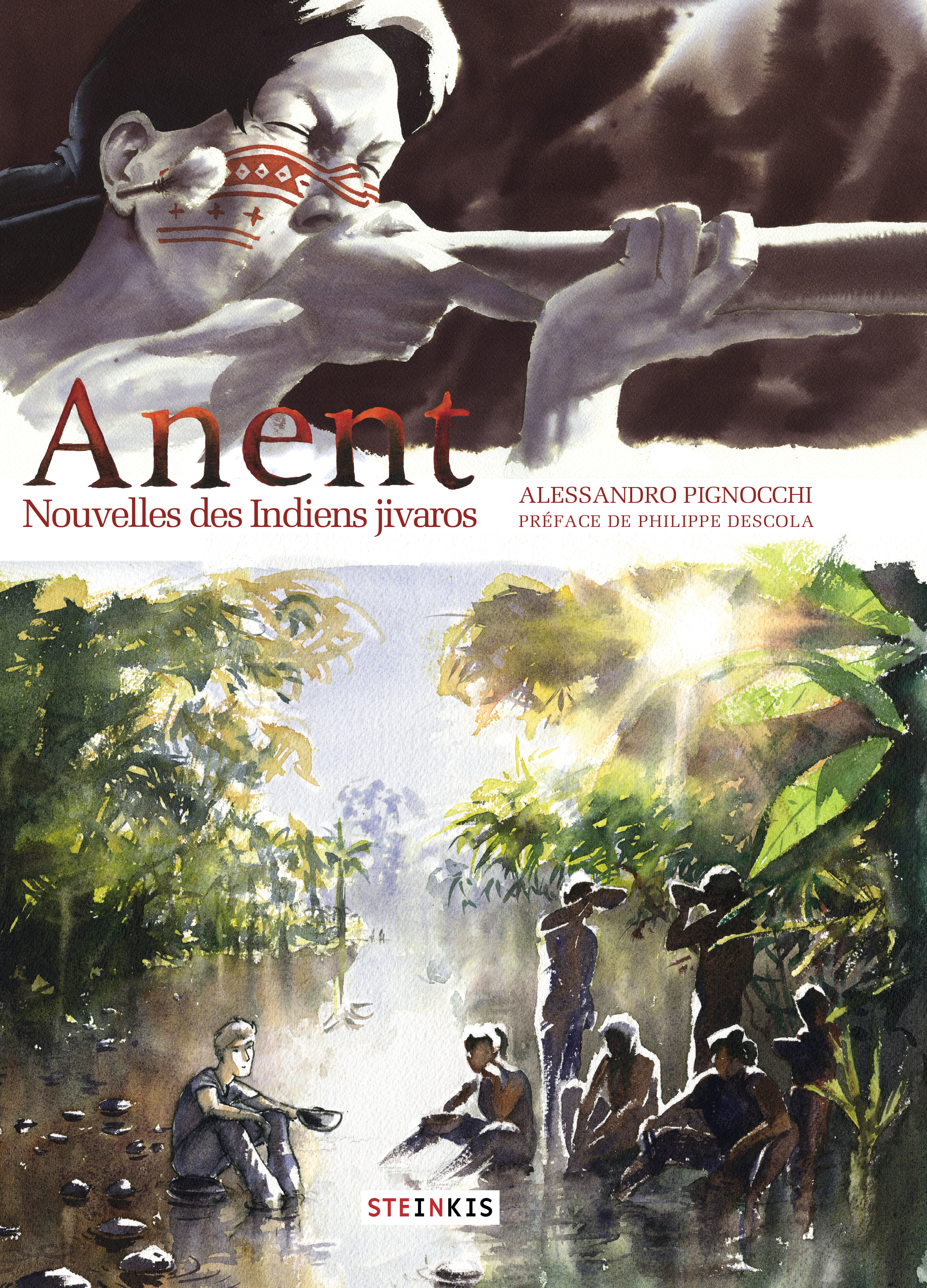 During his post-doc at the IJN in 2013 and 2014, where he worked in
the Social Cognition group, Alessandro Pignocchi studied the
psychological mechanisms underlying the appreciation of art. In 2012,
he published "L'oeuvre d'art et ses intentions" (Artwork and its
intentions) and in 2015 "Pourquoi aime-t-on un film ? Quand les sciences cognitives discutent des goûts et des couleurs" (What makes us like a film? What
cognitive science has to say about taste and colors)
During his post-doc at the IJN in 2013 and 2014, where he worked in
the Social Cognition group, Alessandro Pignocchi studied the
psychological mechanisms underlying the appreciation of art. In 2012,
he published "L'oeuvre d'art et ses intentions" (Artwork and its
intentions) and in 2015 "Pourquoi aime-t-on un film ? Quand les sciences cognitives discutent des goûts et des couleurs" (What makes us like a film? What
cognitive science has to say about taste and colors)
Alessandro Pignocchi has loved to draw ever since he was a child. He
loves it so much, that he hesitated after finishing high school between art and biology. In the end, he chose biology, and kept illustrating on
the side for quite a while. He finally set aside illustration during
his PhD on drawing. "I stopped because I didn't have anything to say."
Inspiration finally found him a little later on, when he read "Lances
du crepuscule" by Philippe Descola. With his post-doc at the IJN
finished, he decided to head off to see the Achuar Indians, 40 years
after the French anthropologist. He did this to get a real picture of
what he had cooked up in his head after reading Descola's account. He
plans to use this comic to tell about his experience. He's finally
reconnecting with illustration. "Anent, Nouvelles des Indiens
jivaros" was published on January 13.
Alessandro Pignocchi is the author of the blog Puntish, which tells
about an imaginary universe where world leaders chose the animist
cosmogony of the Amazonian Indians.
MEDIAS
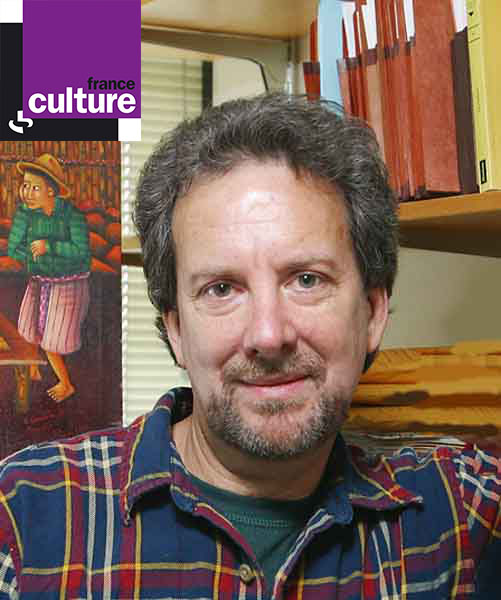
Scott Attran (IJN): the man who understood terrorists
How does one become a terrorist, and how does one stop? What does the
anthropology of terrorism look like today, and can it do something to
help stop terrorism by explaining it? Are we ready to understand the roots
of terrorism so that we may go above and beyond revenge, or should we
think that by explaining terrorism, we're already somehow excusing it?
Guillaume Erner welcomed Scott Atran on the show "L'invité des matins"
(The guest of the morning) on January 18.
Podcast
"Scientific reputation, an infernal race" by Gloria Origgi
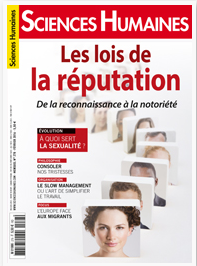
Gloria Origgi (Institut Jean Nicod) took part of the issue of Sciences Humaines magazine about The laws of reputation this month.
Website
Neuroscience and climate change
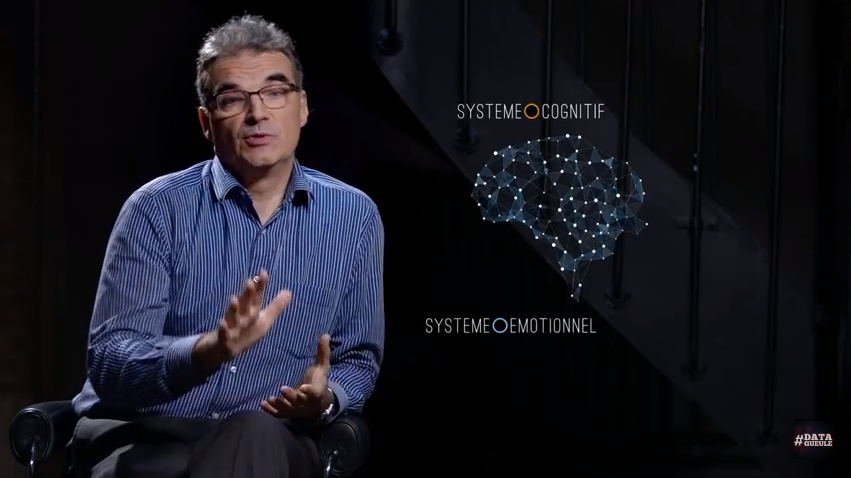
Etienne Koechlin (LNC/ENS) discusses the ideas of decision making and
denial when facing the known consequences of climate change in the
documentary "Deux degrés avant la fin du monde" (Two degrees before
the end of the world) which aired on France 4 in November 2015 and is
available on YouTube.
This special program was aired during the COP21 congress. Its goal
was to present the most recent discoveries from climate science and
the congress's set up to an audience of young adults. This
documentary is a continuation of the short program #Datagueule, which
was also produced by France 4 and focused on three main points: very
reliable data, analytic and explicative discussion, and presumptuous
and malicious attitudes.
Watch "Deux degrés avant la fin du monde" here
AUDIO/VIDEO
Stress and cognition

Jérôme Sackur (LSCP) gave a conference entitled "Stress and cognition"
as part of the ENS's Week of the Brain 2015. It is now available
online on the SavoirsENS website.
Stress is a normal response to a situation that is perceived as being
demanding or dangerous. The physiological effects are numerous and
have been well studied. In this talk, Jérôme Sackur presented
different cognitive effects, especially those concerning decision
making. Generally speaking, the psychology and neuroscience of stress
have shown that when we are stressed, our attention is more focused on
the outside world and our behavior tends to align with our automatic
responses.
Round tables at COP21: cognitive science and ecology
The association Scalp ! and the DEC organized five round table meetings in December 2015 during COP21.
Two of them were recorded and are now available online on the SavoirsENS website:
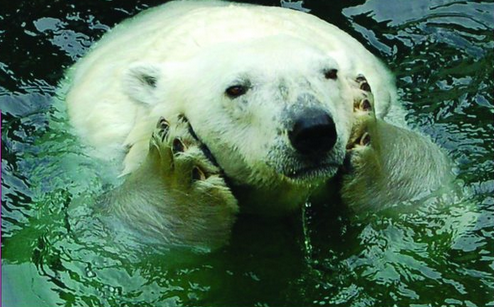 - "Can shame save the earth?": Jennifer Jacquet (New-York University) and Gloria Origgi (IJN)
- "Can shame save the earth?": Jennifer Jacquet (New-York University) and Gloria Origgi (IJN)
Part I
Part II
 - "Environmental damage: accountability and cognitive dissonance": Pierre-Louis Choquet (clinical psychologist) and Albert Moukheiber (PhD student, Oxford University):
- "Environmental damage: accountability and cognitive dissonance": Pierre-Louis Choquet (clinical psychologist) and Albert Moukheiber (PhD student, Oxford University):
Listen to the meetings here
EVENT
1st open day at ENS
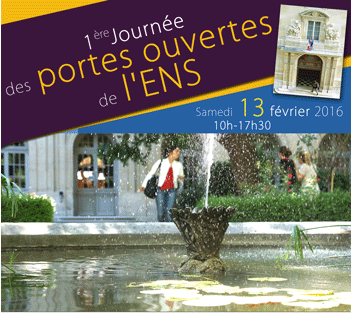
The Ecole normal supérieure organizes its first open day on February 13. It will be a great opportunity for
high school students, preparatory classes students and university students to learn more about ENS, admissions, the range
of degree available, and job prospects.
On the programme: visit of ENS, round table meetings, meetings with the directors of studies of the departments, teachers, students, and projections.
It will be possible to meet the university lecturers and researchers of the DEC at the Maths library located
45 rue d'Ulm between 10:30am and 11:30am, 2:30pm and 3:30pm.
Website
SOME RECENT PUBLICATIONS
El Zein M., Wyart V., Grèzes J., Anxiety dissociates the adaptive functions of sensory and motor response enhancements to social threats. Elife
Abstract:
Efficient detection and reaction to negative signals in the environment is essential for survival. In social situations, these signals are often
ambiguous and can imply different levels of threat for the observer, thereby making their recognition susceptible to contextual cues – such
as gaze direction when judging facial displays of emotion. However, the mechanisms underlying such contextual effects remain poorly understood.
By computational modeling of human behavior and electrical brain activity, we demonstrate that gaze direction enhances the perceptual sensitivity
to threat-signaling emotions – anger paired with direct gaze, and fear paired with averted gaze. This effect arises simultaneously in ventral
face-selective and dorsal motor cortices at 200 ms following face presentation, dissociates across individuals as a function of anxiety, and
does not reflect increased attention to threat-signaling emotions. These findings reveal that threat tunes neural processing in fast, selective,
yet attention-independent fashion in sensory and motor systems, for different adaptive purposes.
Interview of Marwa El Zein on BBC Radio
CALENDAR
February 9, 2016
PaCS seminar (IJN) - H. Haroutioun Haladjian (Western Sydney): "Consciousness and Attention"
February 10, 2016
Mind & Langage seminar (IJN) - Michele Palmira (Barcelona, LOGOS): "Propositions and Arbitrary Reference"
February 11, 2016
EHESS seminar - François Recanati (IJN): "Polyphony in speech act theory"
February 12, 2016
Aesthetics and Cognitive Science seminar (IJN)
Alberto Voltolini (Turin): "Twofoldness and Threelayeredness"
February 12, 2016
The Experimental Philosophy Group (IJN)
Thomas Pölzler (Univ. of Graz, Austria): "How to measure moral realism"
February 13, 2016
Thesis defense
Thibaut Giraud (EHESS): "Il y a des choses qui n'existent pas. En défense d'un meinongianisme logiquement cohérent et ontologiquement économe"
February 15, 2016
EHESS seminar (IJN)
Pascal Engel (Dir. D’Etudes - EHESS): "La fable de l’injustice épistémique"
February 15, 2016
Compas seminar (IJN)
Emmanuel Sander (Université Paris 8): "Analogies, éducation, conceptions du maitre et de l'élève"
16 février 2016
Colloquium du DEC
Dan Dediu : "Language as shaped by non-linguistic forces (including genes and vocal tract anatomy)"
February 17, 2016
Mind & Language seminar(IJN)
Tom Avery (IJN): "Characterising Consciousness"
February 18, 2016
EHESS seminar
François Recanati (IJN): "Polypony in speech act theory"
February 19, 2016
Doc'In Nicod seminar (IJN)
Tomoo Ueda: "Linguistic understanding of unity problem"
February 19, 2016
The Experimental Philosophy Group (IJN)
Nicolas Porot (CUNY): "New (preliminary) data on reference : Causal historical theories better predict usage than classical descriptivist theories"
February 29, 2016
EHESS seminar
Pasquale Pasquino (Law School, NYU et CNRS): "Sources de l’autorité politique (dans les démocraties constitutionnelles)"
DEC calendar cognition.ens.Fr.
DEC Colloquium : http://www.cognition.ens.fr/ColloquiumAgendaENG.html.
Susbcribe to the newsletter
Unsubscribe from the newsletter
